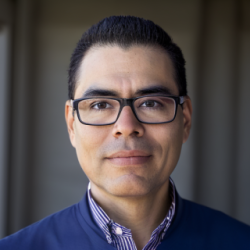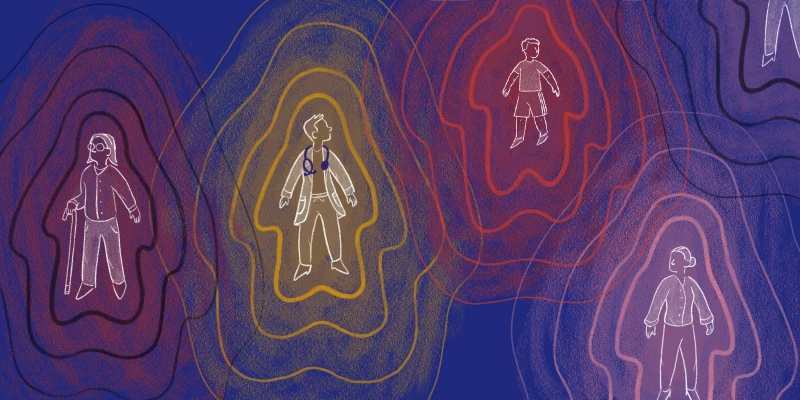The annual American Association of Dermatology (AAD) meeting took place in New Orleans, LA from Friday, March 17th to Tuesday, March 21st, 2023. The AAD meeting consisted of dermatologists from all over the United States, as well as from multiple different countries including Australia, Nepal, Ecuador, India, Denmark, Italy, and more!
The first session, called Therapeutic Hotline, was kicked off by the President-Elect of the AAD, Dr. Seemal Desai. This session included some of the top dermatologists reviewing emerging treatments in all aspects of the field, from melanoma, psoriasis, acne, rosacea, to hair disorders. Multiple different sessions occurred every day, simultaneously with expert doctors in the field presenting latest research, developing ideas, and current controversies. There were even some rooms filled to the brim, with standing room only. To say it was an outpour of knowledge is an understatement.
Dr. Linda Stein Gold of Henry Ford Hospital talked about the newest topical treatments to reduce sebum and explained how the synergistic effects of acne medications showed higher efficacy.
The past president of the AAD, Dr. Darrell Rigel from Mount Sinai went through an overview of skin cancer therapies from hedgehog inhibitors for basal cell cancers to the new PD1 antagonist cemiplimab as the newest neoadjuvant treatment for stage 2-4 squamous cell carcinoma.
Vitiligo was also a hot topic with the recent approval of ruxolitinib cream, which many experts shared thoughts and results on. Dr. Amit Pandya of the University of Texas Southwestern compared various phototherapy options for vitiligo and Dr. Iltefat Hamzavi of Henry Ford Hospital presented surgical options of grafting and melanocyte transplantation.
Advances in alopecia areata were a large area of discussion, with multiple sessions covering advances and discussions to better manage patients. Dr. Amy McMichael of Wake Forest University spoke on central centrifugal cicatricial alopecia and Dr. Carolyn Goh of the University of California in Los Angeles expressed the importance of understanding the cultural stigma surrounding alopecia.
Sessions on pediatric dermatology covered biologics for kids, a large area of concern for parents with children suffering from chronic inflammatory conditions such as atopic dermatitis. Dr. Leah Lalor of the Medical College of Wisconsin hosted an overview of current biologic treatments for children, emerging new therapeutics, and a walkthrough of how to approach certain cases. Dr. Lucinda Liu Kohn of the Children’s Hospital of Colorado discussed hidradenitis suppurativa and acne fulminans management in adolescents by going through month-by-month treatment plans.
Women’s health was a big topic covered by multiple sessions. Dr. Jenny Murase of the University of California San Francisco spoke about differential diagnoses and treatment of nipple dermatitis, management of infections, and the safety of medications used in pregnant and lactating women. Dr. Victoria Werth of the University of Pennsylvania discussed the management of lupus and dermatomyositis in women including criteria for accurate diagnosis to aid treatment. A presentation from the group of Dr. Shadi Kourosh, from Massachusetts General Hospital, discussed dermatologists’ role in human trafficking. The AAD has formed an ad hoc task force on human trafficking to help dermatologists understand signs to look for and ways to navigate helping patients.
Dr. Henry Lim of Henry Ford Hospital shared his expertise on photoprotection including its association with frontal fibrosing alopecia. Rigorous use of sun protection was found to compromise vitamin D status, potentially pointing to the need for screening and treatment in patients with photosensitivities.
Dr. Sancy Leachman of Oregon Health and Science University had a unique presentation on digital dermatopathology slides and the usefulness of a digital platform for research and patient education. Dr. Dirk Elston of the Medical University of South Carolina also presented about digital dermatopathology and artificial intelligence, with emphasis on how our brains recognize complex patterns, a skill every dermatologist uses daily. Finally, Dr. Robert Swerlick of Emory University discussed the importance of data in measuring disparities in care with respect to clinical outcomes. He expanded on the need to adapt our healthcare model to fit the needs of the future to have better outcome measurement tools which leads to impactful patient treatment.
Yet this is still not a complete picture of all the latest work represented at the AAD meeting. There were many more great presentations than those highlighted here. These four days packed with discussions brought on a sense of appreciation for the achievements so far and enthusiasm for the future of dermatology.
The authors have no conflicts of interest to report.
Image by DrAfter123 / Getty






